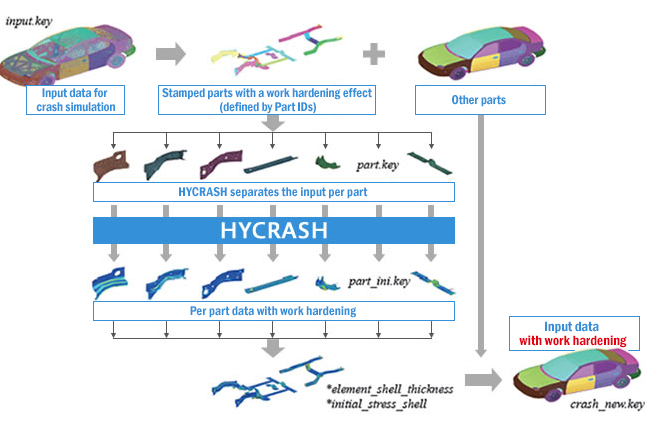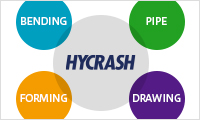
- Products
- HYCRASH

The effect of residual strain distribution and non-uniform thickness due to sheet metal forming - the manufacture process for most of the automotive parts for crash energy absorption - is well known as one of the most affecting factors for correlations between analysis and tests. So that some tries are carried out to calculate the initial strain and thickness before the crash/strength analysis.
Usually, the element size for crash analysis and metal forming analysis are different due to their difference in geometrical information (R size etc.), so after forming analysis, stress, strains, and thickness are mapped to the structural analysis.
However, this process costs pretty much and not very effective. Moreover, the information of die geometry is required for the forming analysis, which usually doesn't exist in structural analysis phase.
"HYCRASH", easy-to-use one step solver. HYCRASH only requires the panels' geometry to calculate manufacturing process effect, geometry of die are not necessary. Additionally, as this is target to usage of crash/strength analysis, even forming analysis data is not needed. If only crash/strength analysis data exists and panel ids is defined. HYCRASH extract panels to calculate it's strain, thickness, and map them to the original data.
HYCRASH also provides the following advantages over traditional methods of mapping stamping simulation to crash models:
- Only part geometry is required; die geometry, holder force are not needed.
- Special skill for forming analysis is not required. Only crash data is needed.
- Very quick calculation time; a few minutes to a few ten minutes in Windows desktop computer.

JSOL Corporation
Multiple practical features for large-scale crash

